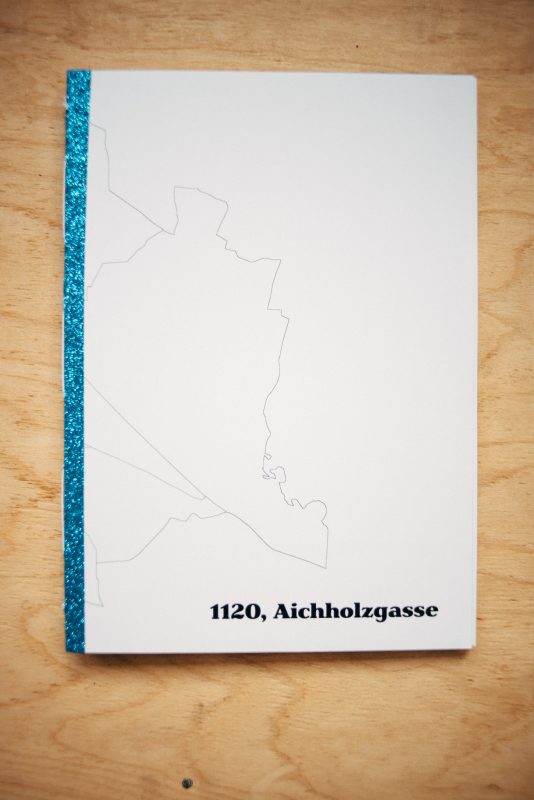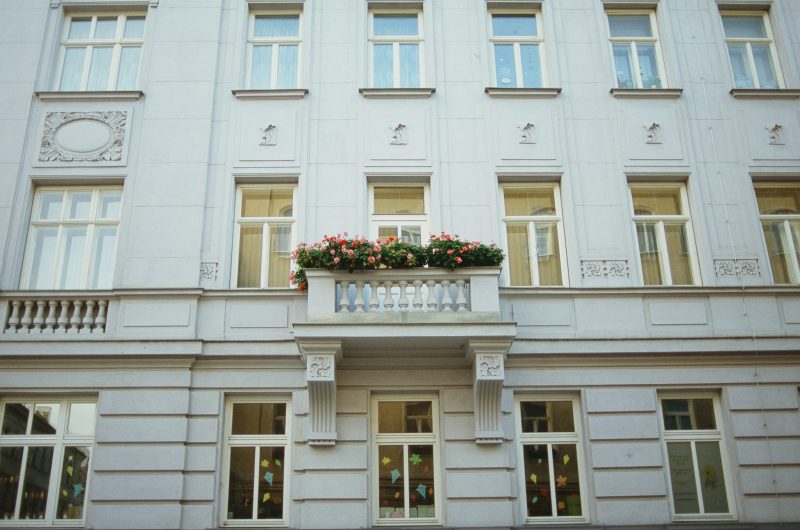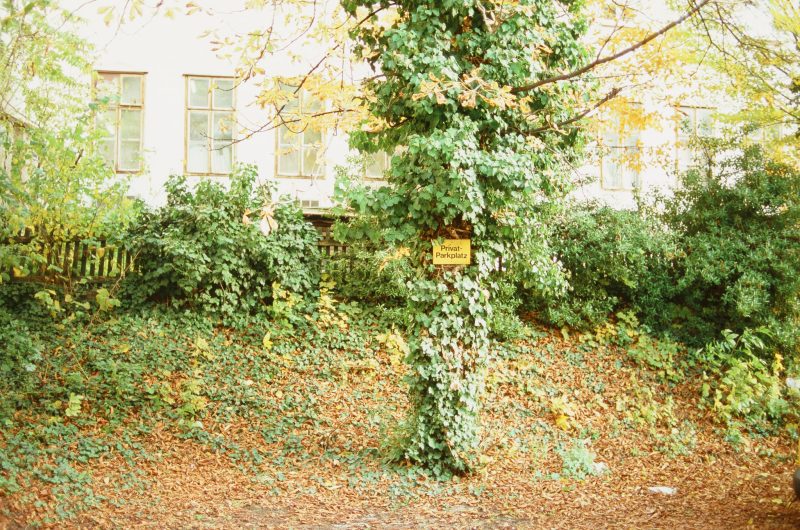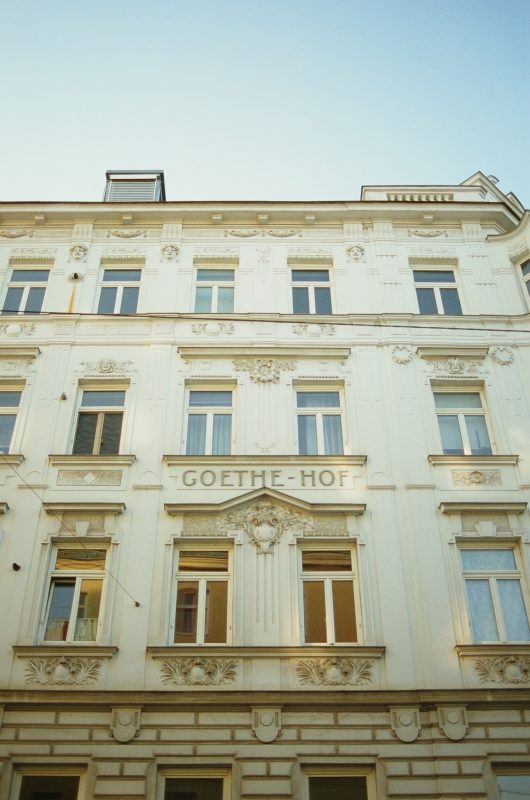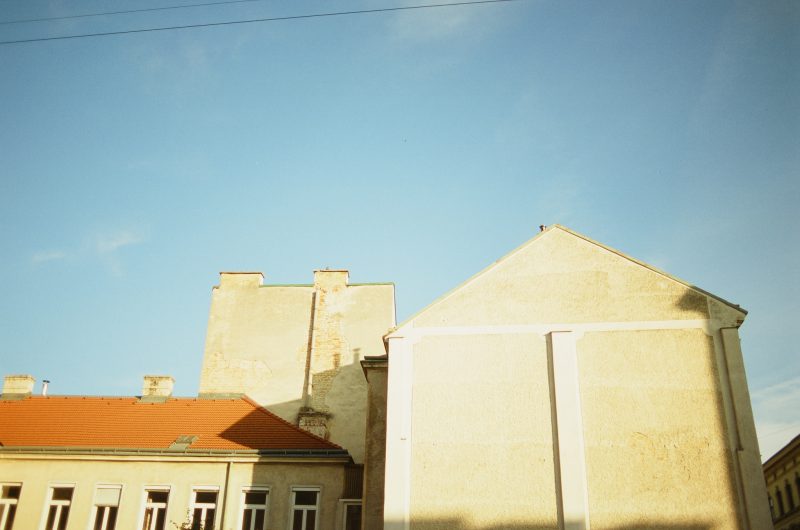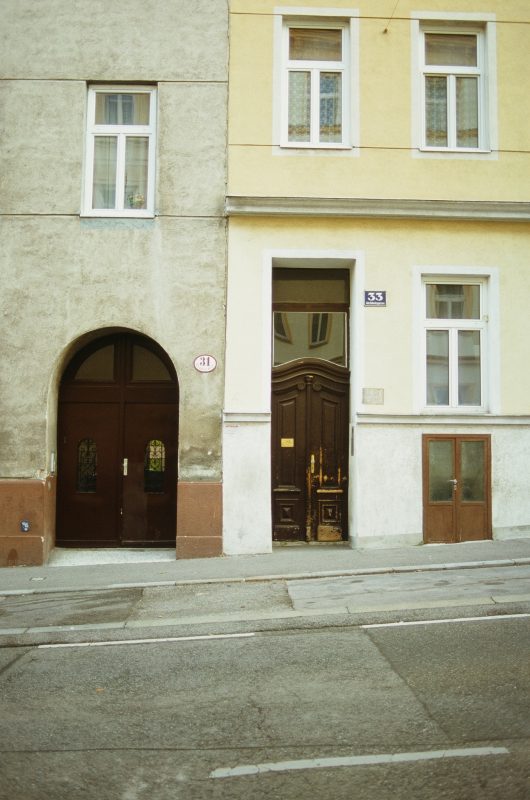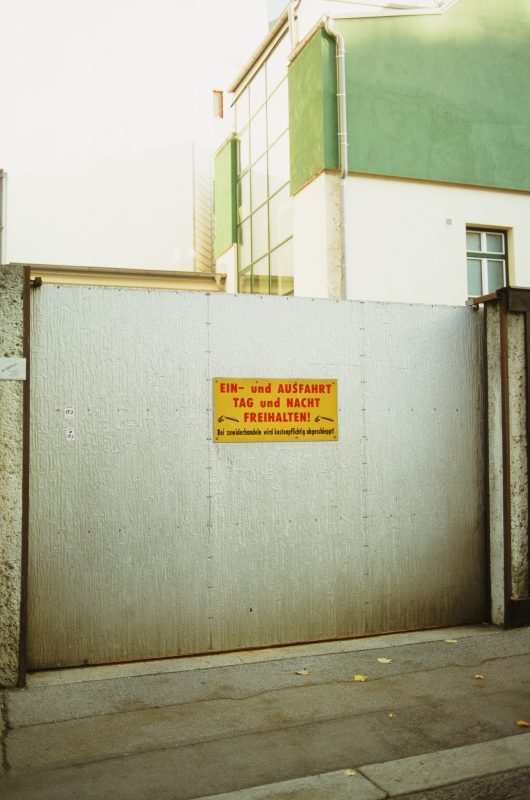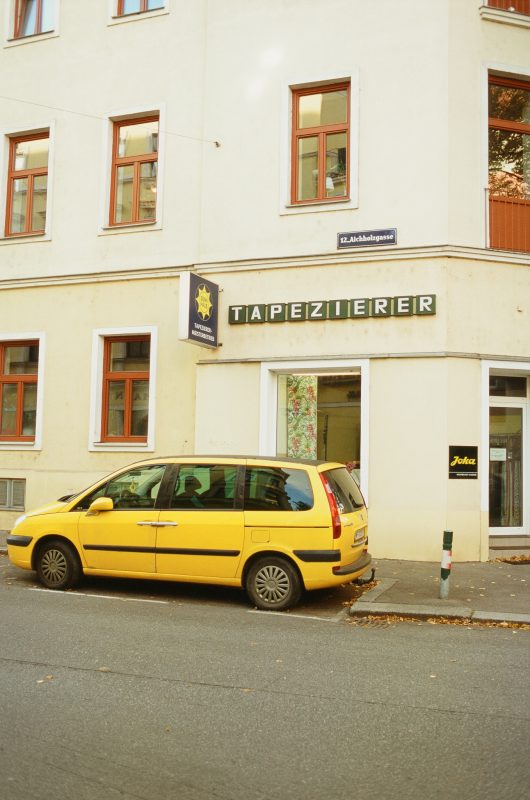Aichholzgasse
1120 Meidling
€ 38,00
Pages: 64 + transparent book end paper + cover
Edition: 5 + artists copy (first edition)
Date: 2019
Film: expired film, Fuji Velvia 100F
Camera: Nikon F100
2 in stock
Buy a print
Aichholzgasse (Meidling) was named in 1894 after the industrialist Josef von Miller zu Aichholz (1797–1871). He ran difficult errands in the war against the French for Andreas Hofer in 1809. For this he also received the Silver Bravery Medal. He came to Vienna in 1811, where he initially worked in drugstores. In 1819 he founded the company Öhler & Miller with the chemist F. A. Öhler. In 1826 he bought the drugstore Grittner and in 1839 he was able to acquire one of the first domestic cane sugar refineries in Vienna. He built the first Austrian soda factory in Hruschau and finally owned companies in the leather industry, sheep wool, sugar and paper manufacturing in Moravia and Bohemia, and the iron industry in Carinthia with thousands of workers. During the revolution of 1848, he was a captain of the National Guard and a member of the Vienna Municipal Committee. In 1852 he became director of the Austrian National Bank.
Josef Miller was married to Belgian Marie Flore d’Heur and had 15 children. His son Vinzenz von Miller zu Aichholz (1827–1913) took over the father’s company, the youngest son Viktor von Miller zu Aichholz (1845–1910) was a chemist and industrialist, as well as an art collector and benefactor, the son Eugen von Miller zu Aichholz (1835–18) 1919) also industrialist and art collector. His son August von Miller zu Aichholz (1829–1899) wrote biography of his father’s life published in 1907 under the title “Esse quam videri” (To be rather than to seem).
The following architecturally interesting buildings can be found in Aichholzgasse:
- Number 4-6: Stix-Hof, built in 1896/1897 by Franz Aufhauser for Miller von Aichholz. Richly structured late-historic apartment building with a shallow three-axis central risalit and oriels on the side, on the third floor remarkable painted frieze with putti and bust medallions; Wrought iron balcony and lattice doors.
- Number 48 (Ratschkygasse 38): Schillerhof, built in 1906 by August Ribak, named after the poet and playwright Friedrich Schiller (1759-1805). Four-storey secession apartment building with corner bay elevated by attic.
- Number 50 (Ratschkygasse 39): Goethehof, built in 1906, named after the poet and statesman Johann Wolfgang von Goethe. In combination with the building opposite Ratschkygasse 36, which is named “Schiller-Hof”, the two great German poets are recognized.
A few municipal buildings also border on Aichholzgasse:
Spittelbreitengasse 23 (Architects: Hans Bichler, Bruno Buzek, Anton Ceplecha, Robert Gerlach, Karl Hauschka, Alexander Kratky, Karl Molnar,)
Ratschkygasse 41-43 (Arch: Camillo Fritz Discher)
Theergasse 3-5 (Karl Dirnhuber)
Indianerhof – Spittelbreitengasse 31-33 (Camillo Fritz Discher)
The street was originally called Blindegasse until 1864 and then Millergasse from 1864–1894.
At No. 11 in Aichholzgasse used to be a forced laborers camp from the National Socialist period between at least May 1944 and 1945.

